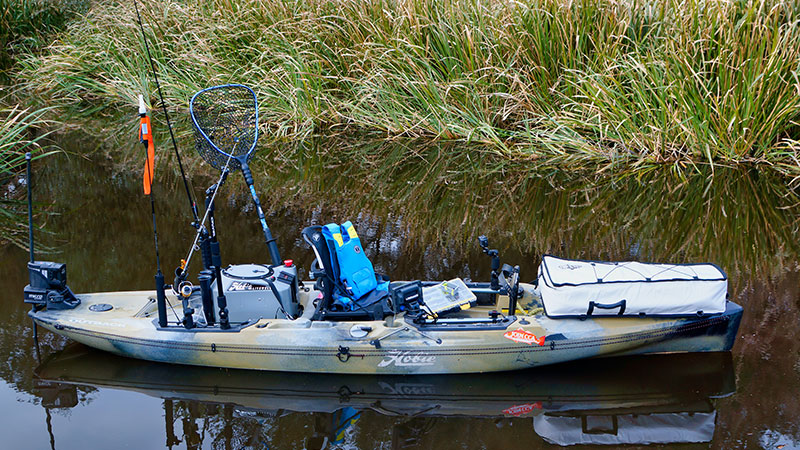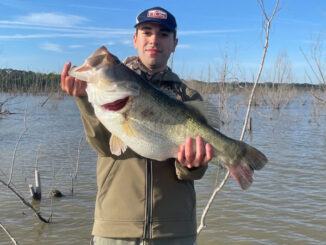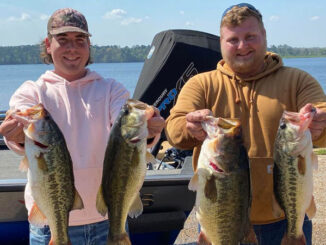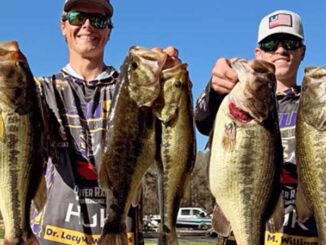
It has been brutally hot, but the fishing has been good. Unfortunately, kayak fishing takes exertion whether pedaling or paddling and can easily cause anglers to get overheated. Go out early mornings or late evenings in order to beat some of the extreme heat. Hydrate and dress appropriately and you can suffer through these dog days of summer knowing that fall is on its way.
One way to avoid the heat is to forego fishing, move the kayak into a covered, shady location and get it rigged for the coming cooler months. This is a great time to regroup and get ready for the more comfortable days to come.
Once considered a minimalist sport, many kayaks today are a far cry from a basic plastic boat and a paddle. While success can still be had fishing a bare-bones kayak, many are tricked out with the latest electronics, PowerPoles, livewells, and an arsenal of rods and lures. Electric motors are becoming more popular, but do require getting the kayak registered just like a boat. None of these are a bad thing, but are not necessary to have a productive and exciting day of fishing. Embrace the “keep it simple” philosophy as you build your level of kayak fishing experience. Over time, you can figure out what you want to enhance your personal style and needs.
Check over your PFD. Looks for rips and tears and replace as necessary. A good cleaning likely won’t hurt. If you use an inflatable, take the opportunity to check the CO2 cartridge and replace if there is any corrosion or it is out-of-date. Quality PFDs provide both safety and comfort. Don’t scrimp on your PFD as the life you save will be your own. Also, wearing an ill-fitting, cumbersome PFD while sitting in a kayak will make you miserable. Get one that doesn’t inhibit sitting or casting.
For those new to the sport, all of the available gear and gadgets can be intimidating. However, more is not always better or necessary. Bring one or two rods, a single box of your favorite lures, a landing net and a pliers for cutting lines and unhooking fish. With these basics, you are set to bring some fish to your kayak. A cooler is also a necessity if you plan to take any home for dinner.
Less travel needed
As the fall approaches, inshore kayakers find less need to travel far from their launch spots. For most, there is no need to make long paddle trips to find successful fishing spots. It may be a psychological thing, but most power boat anglers who spend tens of thousands of dollars on their fishing machine just can’t bring themselves to fish without running for miles and consuming many gallons of expensive gasoline. How many fish do they pass by on their journey?
Necessarily limited by their human-powered propulsion, kayak fishermen have learned that excellent fishing can often be found near and even within sight of the launch. Without the ability to travel long distances, kayak fishermen concentrate on waters with easy access and, usually, little fishing pressure. Remember, fish do not know where the boat launch is.
Of course, not every boat launch area is suitable for kayak fishing. Avoid launches that regularly see nonstop boat traffic throughout the day. If your favorite launch gets a lot of early traffic, set out a little later and peacefully fish while the powerboats are plying waters far and wide. A good way to start is to look up a particular launch on Google Earth. You can get a bird’s eye view of all the surrounding waters. Look for waters nearby that get you out of high-traffic areas.

When moving from spot to spot, cast your way there or have a line out and troll. You’ll be surprised at how often you’ll catch fish in unexpected areas. Even if you have an intended spot in mind, fish on your way and you may never need to get there.
If you are an experienced fisherman, but just not from a kayak, there is not a lot you have to change. Casting and fighting a fish from a seated position is a bit different, but easy to master. Your favorite lures still do the trick. However, if you are a new angler, pick lures that do not require technical presentations to be effective. Spoons and spinnerbaits are some of the simplest to use. Literally casting and retrieving will oftentimes catch fish. Weedless varieties are great if you are fishing areas with lots of submerged vegetation. Simple twitches of the rod or changes in retrieve speeds enhance presentation and often induce a strike.
While some topwater lures require a little practice, cupped-faced chugging lures are quite effective in both fresh and salt water. Cast, let it sit, give the rod a few pops and let the lure sit again. Repeat. There’s no need for a stress test here — the excitement of a topwater explosion instantly confirms whether or not you have any heart problems.
Easy search
A popping cork with a jighead/plastic tail combination is one of the simplest ways to catch a fish. Similar to a topwater chug lure — cast, pop, repeat. This is a great search bait to locate fish. Be sure to cast in every direction around the kayak before moving on.
Virtually any coastal fish encountered will eat a dead shrimp. Whether under a popping cork or on a bottom rig, if the goal is to catch something, dead shrimp is the ticket.
One of the exciting factors of kayak fishing is that you are the captain, deckhand, and angler all rolled into one. However, kayak fishing allows anglers to fish together, but apart. There is no need to be solitary. Find a couple friends and head out together. What’s the fun of catching your personal best if there is no one there to share the excitement with or believe you?
Kayak anglers are generally a different breed. Passionate about the sport, they work hard to let others know how much fun it is. They regularly share fishing tips, rigging advice and, yes, some even share fishing locations. Fishing together is also a good safety practice. Though you are literally not in the same boat, help is usually close by in case it is needed.
Social media is a big part of the kayaking community. Through Facebook and a multitude of internet forums, kayak anglers meet and stay connected with others in their immediate area, around the country — even around the world. They often meet up with other ’yakers to share fishing adventures.
Many areas across the country have local kayak fishing clubs. Whether it is for organized tournaments or friendly get-togethers, joining a club is one of the best ways to get the most out of your kayak fishing adventures.
Now is the time to get ready. The cooler weather is coming and fall offers some of the best times to get in the kayak and catch some fish.


